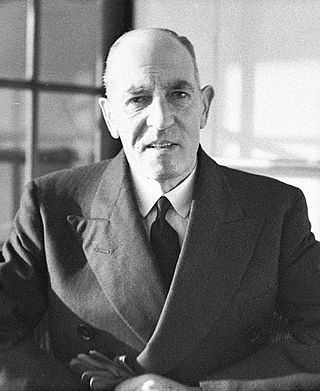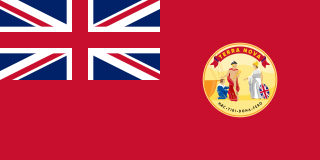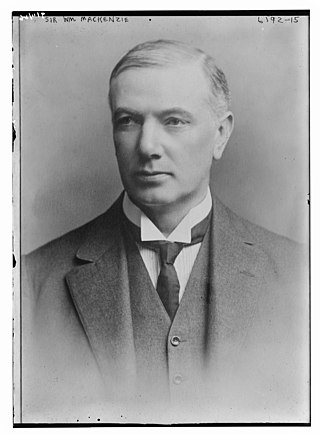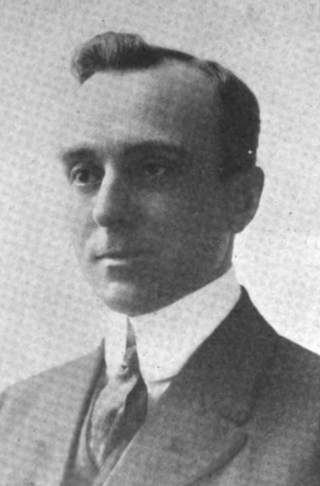
The Statute of Westminster 1931 is an act of the Parliament of the United Kingdom that sets the basis for the relationship between the Commonwealth realms and the Crown.

A Commonwealth realm is a sovereign state that has Charles III as its monarch and head of state. Charles succeeded his mother, Elizabeth II, as monarch of the Commonwealth realms immediately upon her death on 8 September 2022. All the realms are equal with and independent of the others, though one person, resident in the United Kingdom, acts as monarch of each. The phrase Commonwealth realm is an informal description not used in any law.

Admiral Sir David Murray Anderson, was a British naval officer and governor. Anderson served in the Royal Navy from the age of 13 and served in many colonial wars and was given various Empire postings, rising to the rank of admiral in 1931. He retired a year later and took up the posting as Governor of Newfoundland, where he also took up the role of Chairman of the Government following the suspension of self-government in the Dominion of Newfoundland. Leaving Newfoundland in 1935, he was appointed as Governor of New South Wales but served only briefly due to his ill health. He died while in office aged 62.
The Conservative Party of Newfoundland was a political party in the Dominion of Newfoundland prior to confederation with Canada in 1949.

Frederick Charles Alderdice was a Newfoundland businessman, politician and the last Prime Minister of Newfoundland. Alderdice was born in Belfast, Ireland and was educated at Methodist College Belfast. He moved to Newfoundland in 1886. A prominent St. John's businessman, Alderdice was appointed to the Legislative Council of Newfoundland in 1924 and became leader of the Liberal-Conservative Progressive Party and the dominion's Prime Minister when his cousin Walter Stanley Monroe retired from the post on August 15, 1928. Alderdice's first term as Prime Minister was short-lived, however, as his government lost that year's general election to the Liberals led by Sir Richard Squires.

Newfoundland was a British dominion in eastern North America, today the modern Canadian province of Newfoundland and Labrador. It was confirmed by the Balfour Declaration of 1926 and the Statute of Westminster of 1931. It included the island of Newfoundland, and Labrador on the continental mainland. Newfoundland was one of the original dominions within the meaning of the Balfour Declaration, and accordingly enjoyed a constitutional status equivalent to the other dominions of the time.
The Responsible Government League was a political movement in the Dominion of Newfoundland.

William Warrender Mackenzie, 1st Baron Amulree,, known as Sir William Mackenzie between 1918 and 1929, was a British barrister, public servant and Labour politician. He served as Secretary of State for Air under Ramsay MacDonald between 1930 and 1931.

The Newfoundland National Convention of 1946 to 1948 was a forum established to decide the constitutional future of Newfoundland.
Newfoundland, as a British colony and dominion, held 29 general elections for its 28 Newfoundland House of Assemblies; the results of the second election in 1836 were set aside, and another election held in 1837.
Parzival Copes, was a Canadian economist with a particular interest in regional science and specialization in fisheries economics and management.
The Newfoundland Royal Commission or Amulree Commission was a royal commission established on February 17, 1933 by the Government of the United Kingdom "to examine into the future of Newfoundland and in particular to report on the financial situation and prospects therein."
The Legislative Council of Newfoundland was the upper house of the General Assembly of Newfoundland from 1833 to 1934.

The Newfoundland referendums of 1948 were a series of two referendums to decide the political future of the Dominion of Newfoundland. Before the referendums, Newfoundland was in debt and went through several delegations to determine whether the country would join Canada, remain under British rule or regain independence. The voting for the referendums occurred on June 3 and July 22, 1948. The eventual result was for Newfoundland to enter into Confederation, which it did on March 31, 1949, becoming the tenth province of Canada.

The province of Newfoundland and Labrador covers the period from habitation by Archaic peoples thousands of years ago to the present day.

Charles Jost Burchell, was a Canadian diplomat. He served as Canada's first High Commissioner to Australia from 1939 to 1941 and as Canada's first and last High Commissioner to the Dominion of Newfoundland serving from 1941 to 1944 and again from 1948 to 1949.

The Canadian province of Newfoundland and Labrador is governed by a unicameral legislature, the House of Assembly, which operates under the Westminster model of government. The executive function of government is formed by the Lieutenant Governor, the premier and his or her cabinet. The politics of Newfoundland and Labrador is defined by a long history, liberal democratic political institutions and a unique political culture.

The 1932 Newfoundland general election was held on 11 June 1932 to elect members of the 28th General Assembly of Newfoundland. This vote proved to be the final general election held by the Dominion of Newfoundland. As a result of a riot which occurred in 1932 due to Newfoundland's deteriorating economic situation, Prime Minister Sir Richard Squires dissolved the House of Assembly and called an election. His Liberals were reduced to two seats while Frederick C. Alderdice's United Newfoundland Party won 24 seats and was elected to government. The size of the House was reduced from 40 to 27 as an economy measure.

Newfoundland was an English and, later, British colony established in 1610 on the island of Newfoundland, now the province of Newfoundland and Labrador. That followed decades of sporadic English settlement on the island, which was at first seasonal, rather than permanent. It was made a Crown colony in 1824 and a Dominion in 1907. Its economy collapsed during the Great Depression and on 16 February 1934, the Newfoundland legislature agreed to the creation of a six-member Commission of Government to govern the country. In 1949, the country voted to join Canada as the province of Newfoundland.












